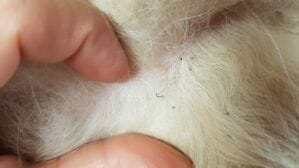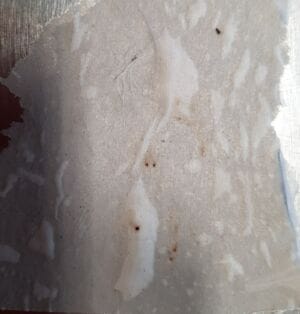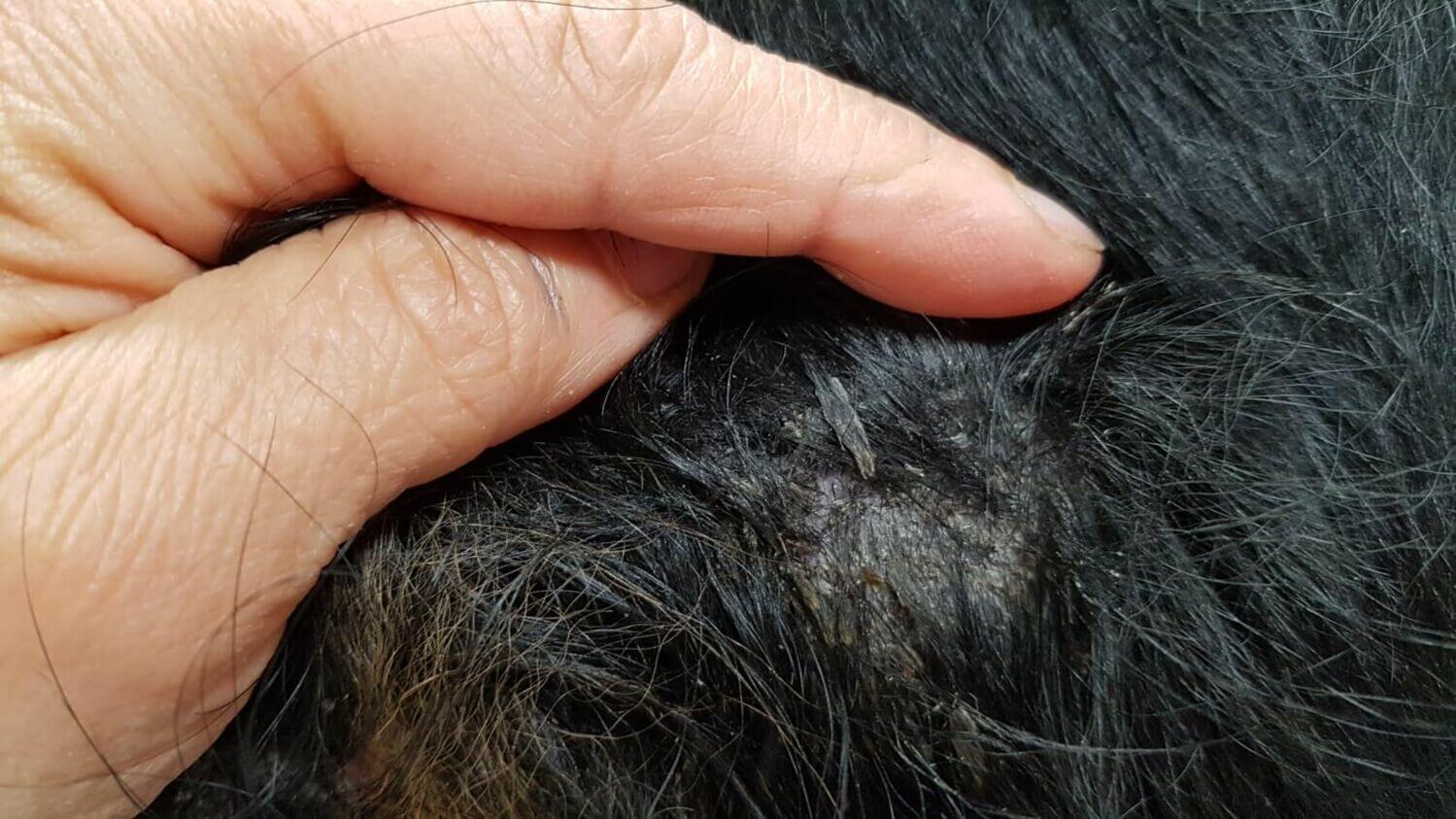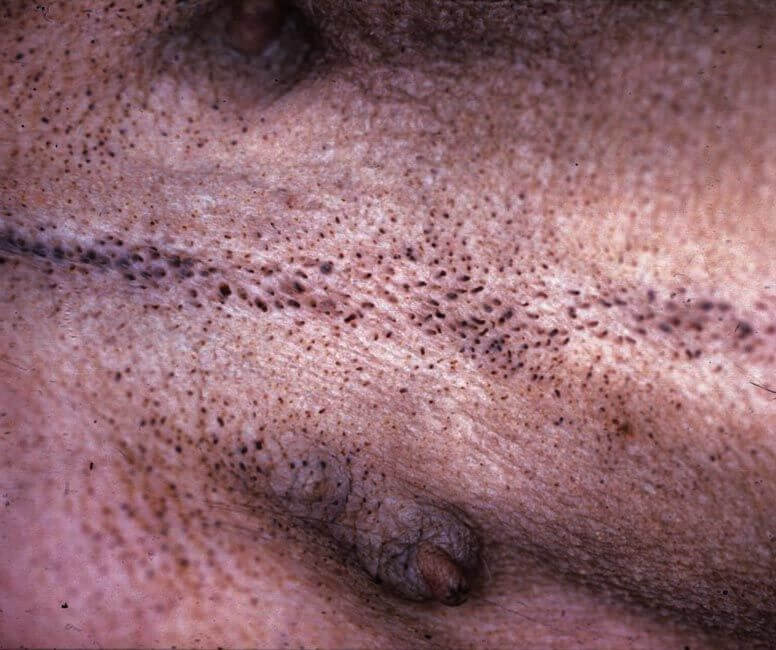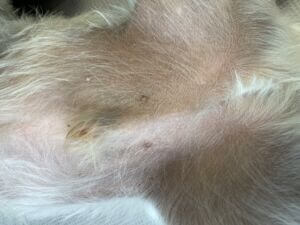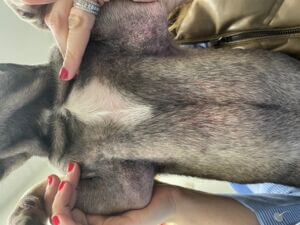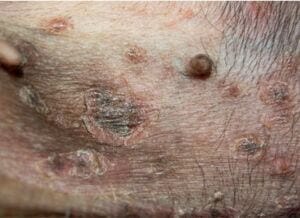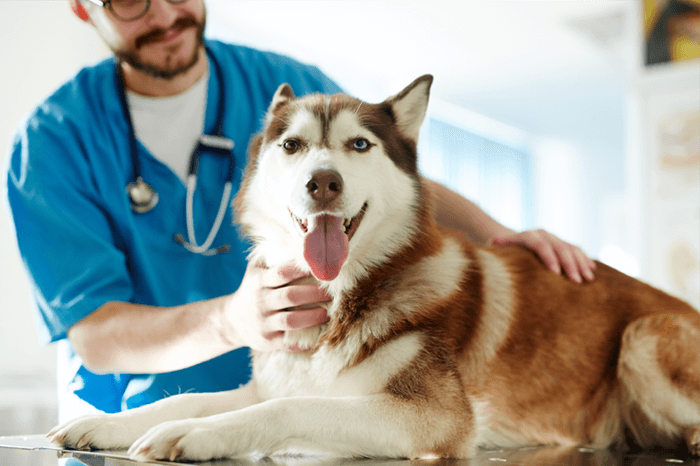Black spots on dog’s skin… is it serious?
Marina G VeterinarianBlack spots? Depending on if it affects coat or skin, meanings are totally different, so as causes.
So, you’re fussing your dog at home… but then, as you idly part the hair, you notice it… The Black Spot. What could it be? Is it cancer? Is it a sign of something serious? What’s going on? Well, there are lots of possibilities…
To decide what’s going on, we need to think about the different types and areas of spots we might be seeing. Different spots will have different causes, and need to be addressed in different ways. Remember, though, if you’re at all concerned, always go and talk to your vet! They will be able to help you through the diagnosis and prepare a proper treatment plan.
Are the spots caused by material in the coat?
Are they free-floating, and do they come off or move as you stroke the hair? If so, likely causes include…
Mud!
Dogs who regularly roll around in the dirt or go swimming inevitably pick up mud… and this can easily cause dark spots in the hair. It is important to make sure that they aren’t something more serious though.
Flea dirt
If the “black spots” are like little grains of black sand, they may be signs of a flea infestation. The best way to distinguish flea faeces from mud is the Wet Paper Test:
- Wet a sheet of plain white paper
- Brush some of the suspicious debris out of the coat, on to the paper
- Try to smudge some of the black dots.
If the smudges are brown, they are probably mud. If, however, they smear to red, then this is digested blood - a sure sign that the spots are actually flea dirt.
Flea faeces definitively demonstrate the presence of adult fleas… but unfortunately, they can’t tell us how many fleas are present in the house, just how many have “caught short” on the dog recently. However, as a general rule, the more faeces, the more fleas.
Treatment of the affected dog is essential, preferably using a product recommended by your vet. It is, however, also important to treat the environment where 95% of the flea population is lurking, as eggs, larvae and pupae, waiting to develop and hop back on board. Again, your vet will be able to advise you on the best way to clear an infestation!
Seborrhoea or oily residues
Although “dandruff” in dogs is usually pale, whitish “scale”, occasionally the oily residues can dry up and turn darker, showing as brown flakes in amongst the hairs. These don’t usually smear at all on a Wet Paper Test, allowing us to distinguish them from mud and from flea faeces.
Oily flakes are commonly seen disorders triggered by increased sebum production, but you may also see dry flakes in exfoliative disorders. And of course, many dogs will have both! It is normal to find a few flakes, but if there are a lot, this suggests a clinical disorder requiring veterinary investigation.
Management of seborrhoea usually revolves around treating the underlying cause (if known) and restoring the lipid balance of the skin and normalising cell turnover, with ingredients such as Seboliance found in DOUXO® S3 SEB.
Are they in or on the skin and very localised?
If they make up small, discrete lumps (usually round, although the margins may be a little irregular in some cases), surrounded by normal skin, then you’re probably dealing with a “focal pathology”. This means there’s a problem in that one area, but the rest of the skin may be largely unaffected. Important causes include…
Comedones
Comedones, or blackheads, are a fairly common sign of skin disease, occurring when pores become blocked and fill with cellular or oily material. This may be infected or not but is usually a sign of some dysfunction within the skin. There are several causes to blackheads, and a dog with more than one comedone, or where there seems to be any inflammation, redness or discomfort around the blackhead should be seen by your vet.
Tumours
Skin tumours are quite uncommon in dogs. Several can have a brown/back aspect, are usually dark/black and often irregular (a little like a blackberry embedded in the skin). If you see such presentation evolving over the time, always seek veterinary attention as soon as practical: the earlier these disorders are caught, the more effective treatment is likely to be.
Is the skin thickened/refined and/or itchy?
Skin darkening +/- thickening with itching
Hyperpigmentation often appears in case of skin aggression. Part of skin repair involves increased melanin, a dark skin pigment to protect the superficial skin layers of the skin. Lichenification is a long-term change in thickness often seen with hyperpigmentation, resulting in darkened patches on dogs’ skin, sometimes as black areas, sometimes as brown spots. It is often a response of the skin to ongoing inflammation and irritation. Whatever the cause, the irritation and inflammation within the skin promote the development of skin cells, as the skin thickens to protect itself. As part of this process, there is an increase in the numbers of melanocytes (pigment cells), resulting in a darkening of the skin, along with signs of the underlying irritation. This is a change that takes weeks or months to occur, though, so typically indicates a condition that has been grumbling on for quite some time.
Common underlying causes include:
- Skin allergies - even if treated and managed, you may sometimes see progressive lichenification after each episode, due to the general inflammation of the area(s) affected.
- Untreated or late bacterial skin infections - although most early bacterial skin infections are relatively easy to manage, the longer they go on, the more irritation is caused and the more likely a chronic reaction in the skin becomes. At late stages, papules / pustules evolve to circular dead skin cells with sometimes a dark center (epidermal colarette).
- Ongoing fungal or yeast infections - these are really common in chronic skin disease. However, it can be a bit of a chicken and egg situation: did the yeast infection cause the ongoing skin inflammation, or did the inflammation lead to a situation where the natural skin flora (the balance between different natural microbes on the skin surface) was disrupted, allowing the yeasts to take over? Both are possible, but in most cases, yeast problems are secondary to chronic inflammation due to another cause, typically skin allergies.
- Unmanaged skin parasites - once again, common causes of skin inflammation! Fleas, lice and mites promote inflammatory responses, but they and the itching they provoke also disrupt the bacterial flora of the skin and so encourage secondary infections. Over time, the skin responds to protect itself, resulting in lichenification.
However, it is very difficult to distinguish these different causes just by looking: the skin responds in a very similar way, whether it’s bacterial infection, yeasts, parasites, or allergens triggering it. As a result, diagnosis requires veterinary attention, and often in-house laboratory tests such as skin scrapes (for deeper living parasites), impression smears and tape strips (for cells, yeasts and bacteria, and surface-dwelling parasites).
The treatment is straightforward in principle: manage the underlying cause and in many cases, we can hope that the skin will gradually, over months, return towards its normal condition. For lichenification of chronic inflammation, restoration of healthy skin may be assisted with the use of products like DOUXO® S3 PYO in case of microbiota dysbalance, which help to restore balance to the skin flora; or DOUXO® S3 CALM, specifically designed to soothe itchy, irritated, sensitive skin.
If there’s no sign of inflammation or ongoing underlying skin problems, then other possible causes include:
Skin darkening without itching
There are other causes to hyperpigmented skin, in absence of itching, such as breed-specic variations, seborrhoeic disorders, hormonal disorders, some medications, physiological changes etc. The most common endocrine disorders causing hyperpigmentation are hypothyroidism (underactive thyroid) and Cushing’s disease (overactive adrenals). However, others may involve other hormone systems. Skin changes following sex hormone events such as puberty, castration or spaying are well recognised, although it’s fairly uncommon for these changes to persist long term.
Hormonal conditions typically cause hair loss symmetrically along the flanks, along with darkening of the skin. In the case of hypothyroidism, comedones may be seen as well; they can also occur with Cushing’s, along with thinning of the skin and other skin lesions like deposition of calcium in the skin. Systemic signs may include changes in behaviour, activity, urination, drinking and appetite.
With any suspicion of a hormonal or endocrine problem, always seek veterinary advice: most are manageable, and when the underlying condition is treated, the skin will often return to normal.
Whatever the cause…
...the next step is to talk to your vet about getting a firm diagnosis and treatment plan. Remember, there are a lot of options now for treating all of these conditions, some will require oral medications as prescribed by your vet, some will be greatly improved by topical products such as DOUXO® S3 (either CALM, PYO or SEB depending on the cause) that also contribute to maintain healthy skin and skin balance.



